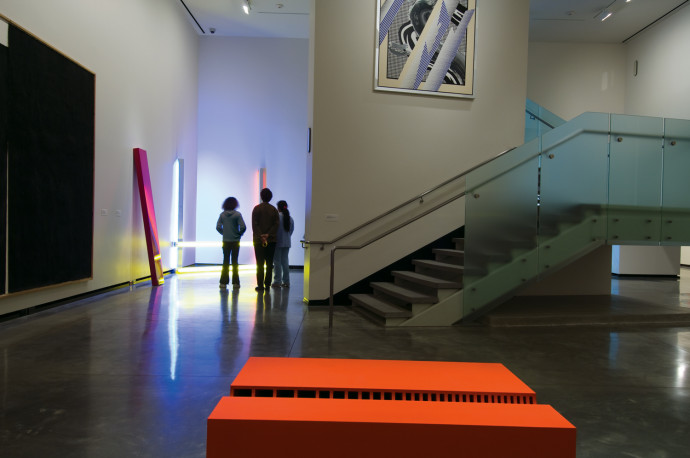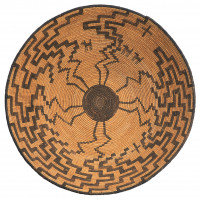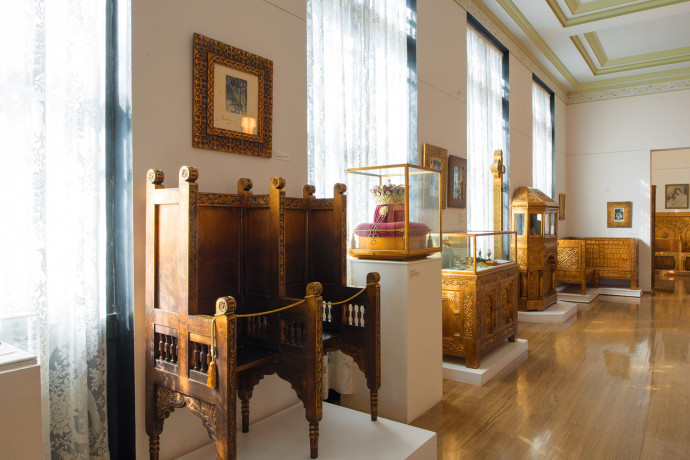Art + Entrepreneurship

What happens when art and entrepreneurship intersect? The result is a revitalized seminar on curatorial affairs offered by the Center for Entrepreneurship.
“The course is an introduction to all kinds of topics pertinent to being a curator,” says Linda Tesner, who teaches the class and also serves as director of Lewis & Clark’s Gallery of Contemporary Art. Tesner builds the course around face-to-face interaction with working professionals in Portland’s vibrant art community. Students have discussed collections management with the registrar of the Portland Art Museum; explored issues surrounding ethnographic artifacts with a curator from the Maryhill Museum of Art; and even visited the home of a private art collector. “I try to give students experiences they have no way of accessing on their own,” says Tesner.
Tawny Bright BA ’18, a history major with an interest in museum work, took the course this past spring. “I was looking for a class that would also give me some actual experience and help me figure out what I want to do in the future,” says Bright. She particularly enjoyed the field trip to local conservator Nina Olsson’s studio. “Nina showed us the various stages of her restoration process. It was really cool to actually see the paintings in process.”
Tesner’s main goal for her students is to get them thinking critically about what they see and how they organize information: “That’s at the heart of what all curators do,” she says. As part of the course, she asks her students to visit museums and commercial galleries on their own every other week and journal about their experiences. “We live in a visually stimulating environment,” Tesner says. “I think part of the curatorial practice is sussing out those experiences and developing visual sophistication.”

Previous students of this class have gone on to do amazing things, according to Tesner. Some have pursued work at museums, including the Portland Art Museum and SITE Santa Fe. Others have blogged about art for commercial websites, opened their own galleries, or become artists themselves.
“Curation is valuable in many areas … historical museums, zoos, aquaria, and so on,” says Tesner. “But I love showing students the possibilities through the arts lens.”
—by Samantha Pratt BA ’20

More L&C Magazine Stories
Lewis & Clark Magazine is located in McAfee on the Undergraduate Campus.
MSC: 19
email magazine@lclark.edu
voice 503-768-7970
fax 503-768-7969
The L&C Magazine staff welcomes letters and emails from readers about topics covered in the magazine. Correspondence must include your name and location and may be edited.
Lewis & Clark Magazine
Lewis & Clark
615 S. Palatine Hill Road MSC 19
Portland OR 97219

